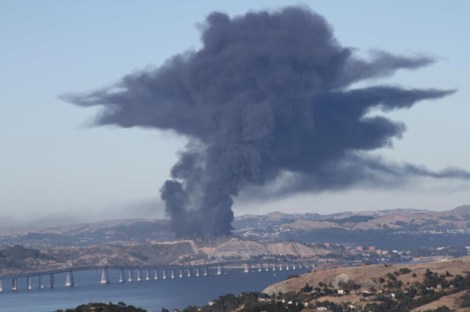A small corroded pipe caused the initial blast at a Chevron refinery in Richmond, Calif., this past August, but the oil giant’s own firefighters, in their haste, may well have been responsible for the fire’s spread.

The San Francisco Chronicle reports on the ongoing investigation, which reveals that early efforts to put out the flames may have actually stoked them.
“One theory we are exploring is that emergency response activities inadvertently accelerated the rate of the leak,” said Daniel Horowitz, managing director of the Chemical Safety Board. “We are comparing possible tool marks on the pipe with tools recovered from the incident.”
One tool that may have inflicted the apparent damage is a Halligan bar, which has a hook-like implement with a sharp end. Firefighters are commonly equipped with the device to help them gain entry into burning buildings.
Don Holmstrom, the Chemical Safety Board’s lead investigator looking into the fire, said the blaze might well have happened even without the apparent puncture, but that the external damage could have been “an aggravating factor.”
Investigators have not determined what sparked the blaze, but have raised questions about Chevron’s decision to continue to run crude oil through the pipe even as workers responded to the initial, small leak.
“Regardless of the exact sequence of the events, this incident emphasizes the importance of effective decision-making in shutting down the unit promptly in case of a leak of this type,” Horowitz said.
Effective decision-making! I wonder if that’s what Chevron was doing when it strong-armed Richmond last month.
After Chevron threatened to lay off more than 600 workers if it didn’t get city permits for [refinery] reconstruction, Richmond gave the go-ahead late last month.
Yeah, effective for Chevron, maybe, but not so much for poor, polluted Richmond.


